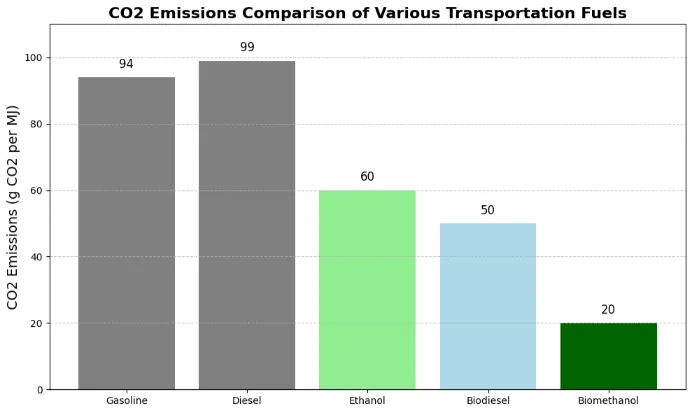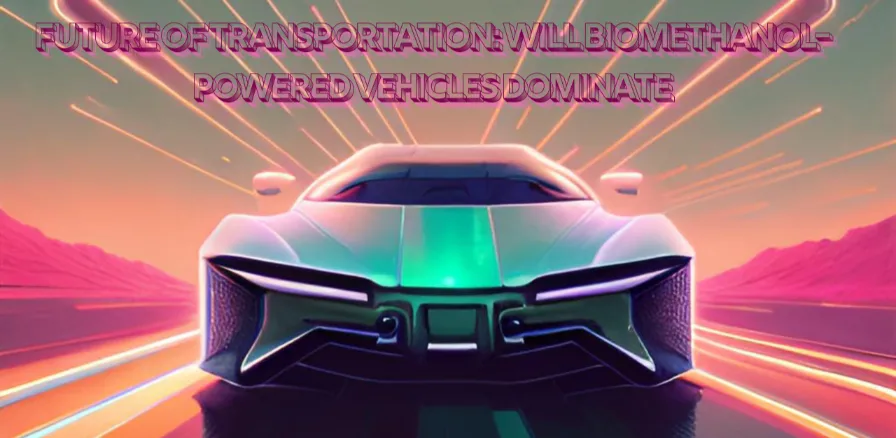
The Future of Transportation: Will Biomethanol-Powered Vehicles Dominate?
As the world moves toward a sustainable future, the transportation sector faces a crucial moment for change. Concerns about climate change, fossil fuel depletion, and air pollution make the search for cleaner, renewable fuels more urgent than ever.
One of the leading options in this green revolution is biomethanol, a renewable, low-carbon fuel made from biomass and waste. But can biomethanol-powered vehicles really lead the future of transportation? This exploration looks into the science, benefits, challenges, and market trends shaping the biomethanol landscape.
What Is Biomethanol?
Biomethanol is a renewable form of methanol created from organic materials like agricultural waste, municipal solid waste, forestry byproducts, or even captured carbon dioxide. Unlike standard methanol, which usually comes from natural gas, biomethanol uses carbon that already exists in the environment, significantly lowering its environmental impact.
How Is Biomethanol Produced?
The production process includes several key steps:
- Feedstock Collection: Gathering biomass or waste materials.
- Pre-treatment: Preparing raw materials for conversion.
- Gasification: Turning biomass into synthesis gas, a mix of CO, CO₂, and H₂.
- Methanol Synthesis: Converting syngas into methanol using a catalyst.
- Purification: Refining the product for fuel or chemical use.
This closed-loop method not only uses waste but also supports circular economy principles.
Why Biomethanol? Key Advantages
1. Significant Carbon Emission Reductions
Transportation accounts for nearly a quarter of global CO₂ emissions. Biomethanol presents a real solution by significantly cutting greenhouse gas emissions compared to gasoline and fossil-derived methanol. Research shows that its global warming potential is much lower, especially when made from wood or waste biomass.
2. Cleaner Combustion and Air Quality
Biomethanol burns cleaner than gasoline or diesel, leading to lower emissions of particulates, nitrogen oxides (NOx), and sulfur oxides (SOx). This results in better urban air quality and health benefits for the public.
3. Versatility and Compatibility
- Fuel Blending: Biomethanol can be mixed with gasoline or used alone in modified engines.
- Feedstock Flexibility: It can be produced from various renewable sources, reducing reliance on any single feedstock.
- Infrastructure Adaptability: Current fuel distribution systems can often be adjusted for methanol with little investment.
4. Economic and Energy Security
By using local biomass resources, countries can cut oil imports, support rural development, and create green jobs.
Biomethanol vs. Other Alternative Fuels
| Feature | Biomethanol | Ethanol | Biodiesel | Hydrogen | Electric Vehicles |
|---|---|---|---|---|---|
| Source | Biomass, Waste | Biomass | Vegetable oils | Water, Natural Gas | Electricity |
| GHG Emissions | Very Low | Low | Low | Zero (if green) | Zero (if green) |
| Engine Compatibility | High (with mods) | High (with mods) | Diesel engines | Fuel cell engines | Electric motors |
| Infrastructure | Adaptable | Existing | Existing | New needed | New needed |
| Energy Density | Moderate | Moderate | High | High | Varies |
| Cost | Competitive | Competitive | Higher | High | Falling |
Biomethanol stands out for its combination of low emissions, compatibility, and scalability, especially in areas lacking electric or hydrogen infrastructure.
The State of the Biomethanol Market
Global Trends
The biomethanol market is growing quickly, fueled by:
- Climate policies, like the Paris Agreement
- Renewable energy mandates, such as the EU Renewable Energy Directive
- Corporate sustainability goals
Major investments are going into biomethanol production facilities, especially in Europe and Asia, where governments are encouraging low-carbon fuels.
Investment and Innovation
New technologies are driving down production costs and boosting yields. Companies are exploring:
- Improved gasification methods
- Carbon capture integration
- Waste-to-fuel processes
Challenges Facing Biomethanol Adoption
1. Production Scale and Cost
While feedstock is abundant, increasing production to meet global transportation demands needs a lot of capital and technological progress. Biomethanol is currently pricier than fossil methanol, although costs are decreasing as technology advances.
2. Infrastructure and Engine Modifications
Though biomethanol can use existing infrastructure, widespread adoption requires modifications to vehicles and fueling stations. Flexible-fuel vehicles and retrofitting are possible but need policy support and consumer acceptance.
3. Feedstock Competition and Sustainability
The sustainability of biomethanol depends on responsible sourcing. Competing uses for biomass, like food and materials, plus land-use changes, must be managed to prevent negative environmental effects.
4. Policy and Regulatory Uncertainty
Clear, long-term policies are crucial for attracting investment and fostering adoption. Inconsistent regulations or a lack of incentives can slow progress.
Environmental Impact: Life Cycle Assessment
A detailed life cycle assessment (LCA) of biomethanol shows:
- Lower global warming potential than fossil methanol and gasoline.
- Rapid biodegradability in case of spills, with minimal environmental persistence.
- Opportunities for improvement in pre-treatment and production stages to further reduce impacts.
The Road Ahead: Will Biomethanol Dominate Transportation?
Opportunities for Leadership
Biomethanol is well-positioned to play a major role in reducing emissions in transport, especially in areas where electrification is tough, such as:
- Heavy-duty trucking
- Maritime shipping
- Aviation (for synthetic fuel production)
Complementary Role
Rather than being a one-size-fits-all solution, biomethanol is likely to work alongside other options like biofuels, hydrogen, and electrification, each addressing specific niches based on local resources, infrastructure, and policies.
Market Projections
With supportive policies and ongoing innovation, biomethanol could capture a significant share of the alternative fuels market by 2030 and beyond, particularly in regions focused on energy independence and cutting emissions.
Conclusion: Biomethanol’s Place in the Green Transport Revolution
Biomethanol is more than just a promising alternative fuel—it represents a bridge between today’s fossil-fueled world and tomorrow’s sustainable, circular economy. Its advantages in emissions reduction, resource flexibility, and compatibility with existing infrastructure make it a compelling candidate for widespread adoption.
However, the journey toward biomethanol-powered vehicle dominance will depend on overcoming production, infrastructure, and policy hurdles. With coordinated action from industry, governments, and consumers, biomethanol could help drive the next era of clean, resilient transportation.
The future is renewable. The future is biomethanol.
Stay Updated on Sustainable Transportation
Subscribe to our newsletter for the latest insights on renewable fuels, green technology, and sustainable transportation solutions.
Subscribe Now
